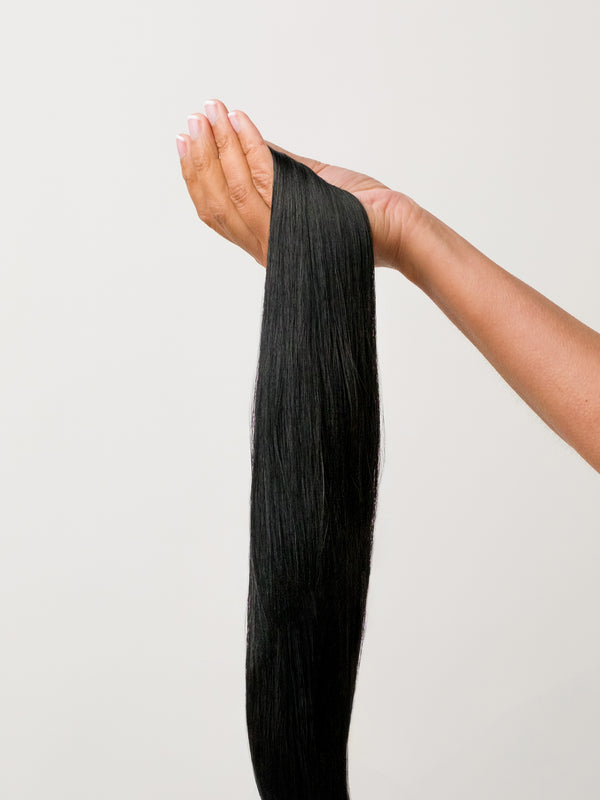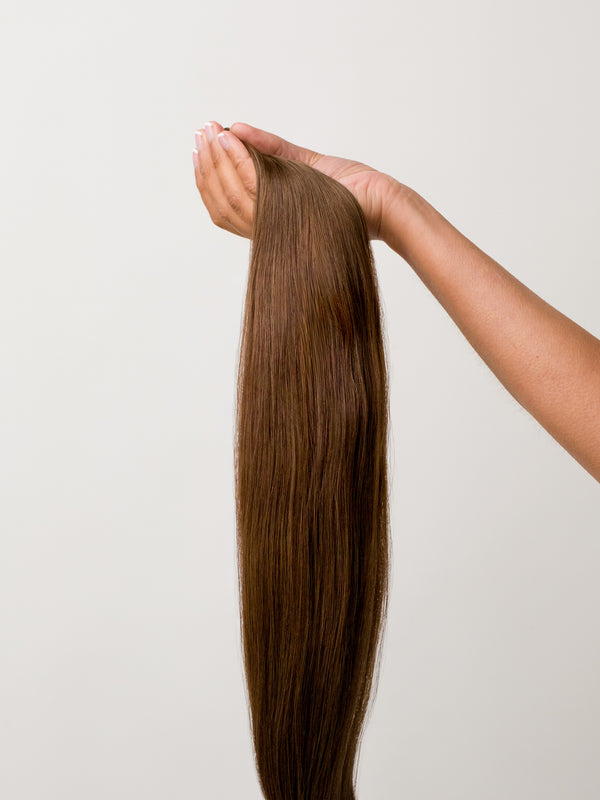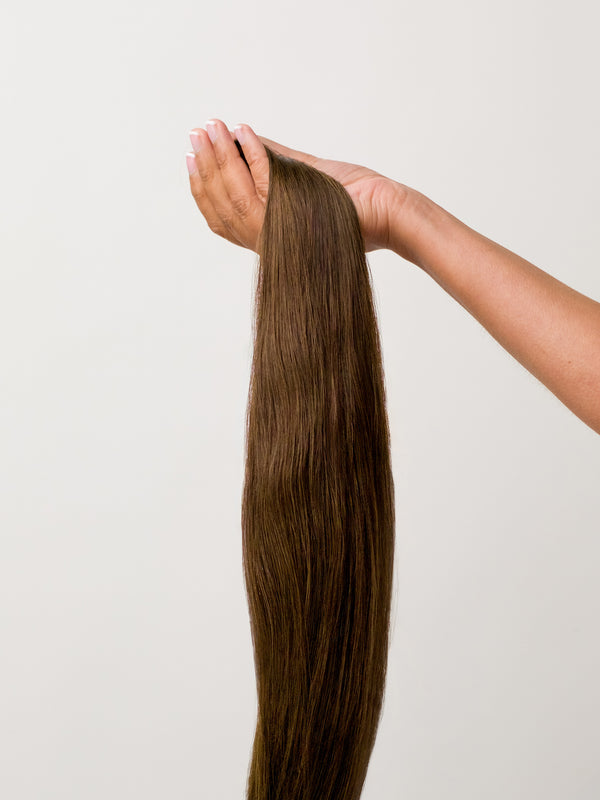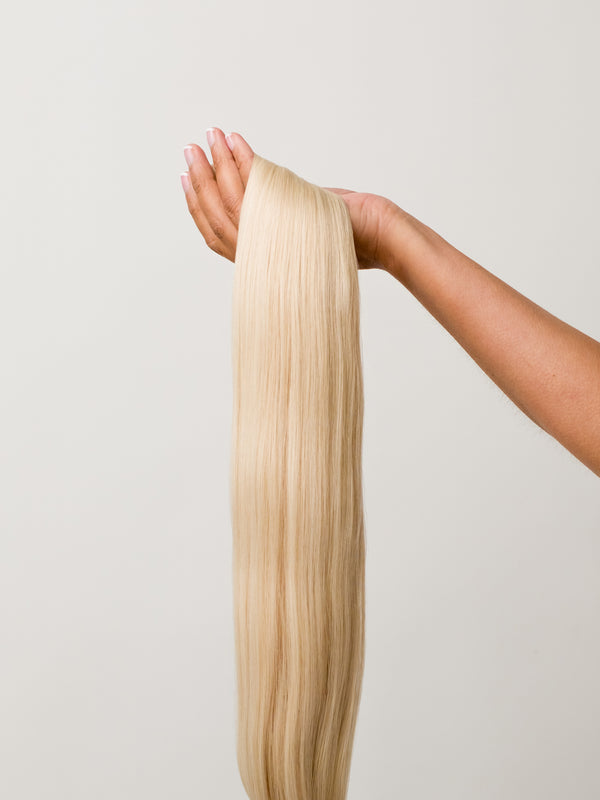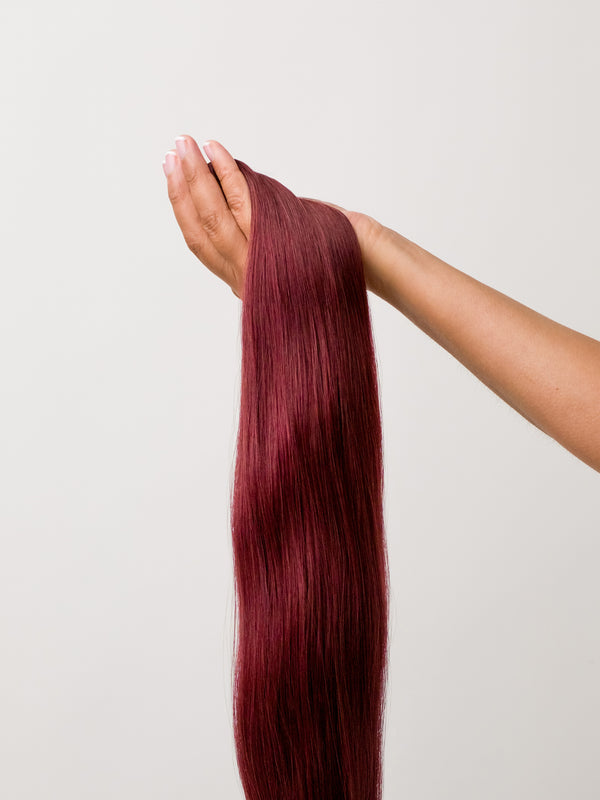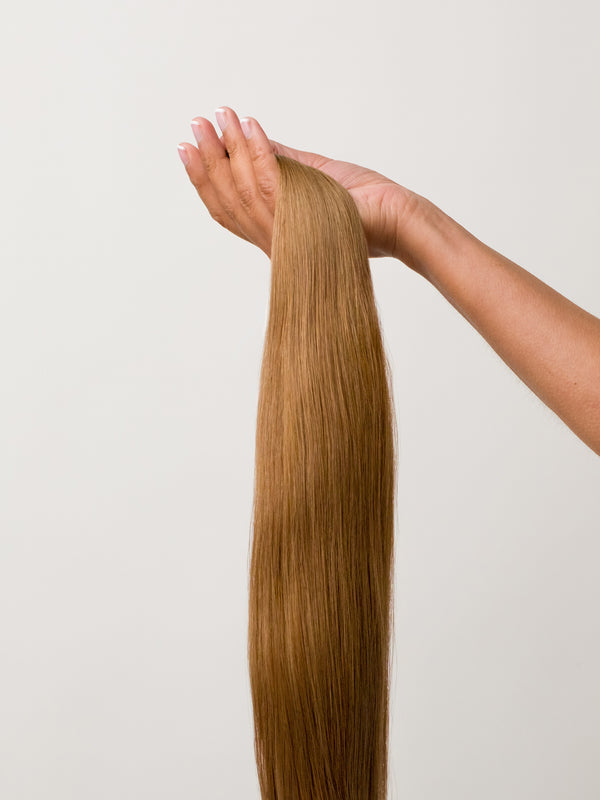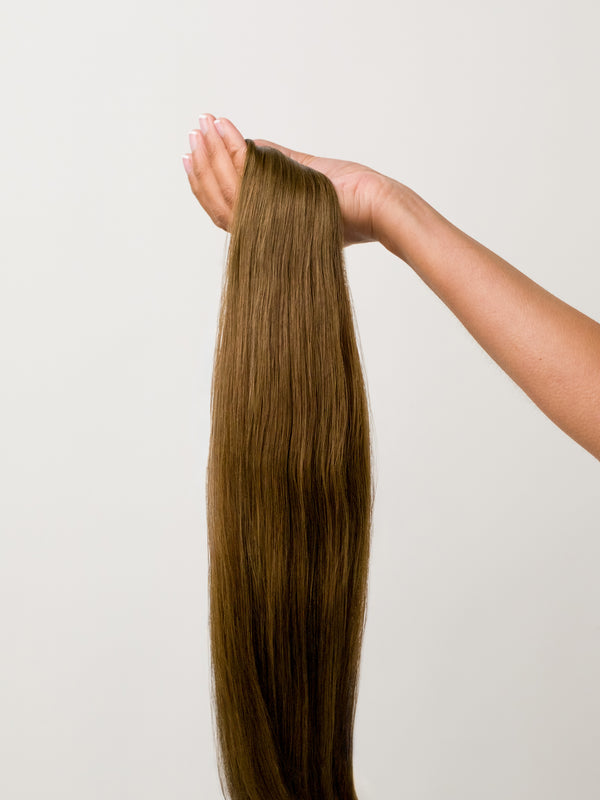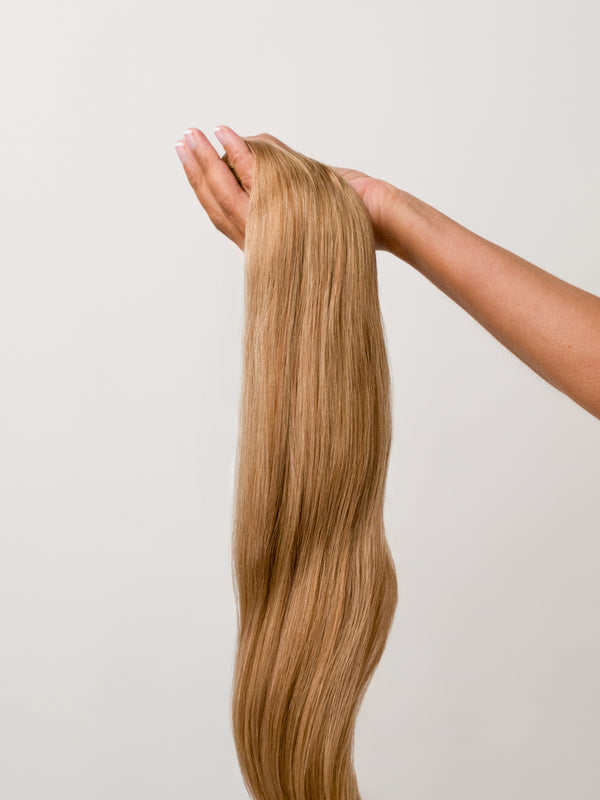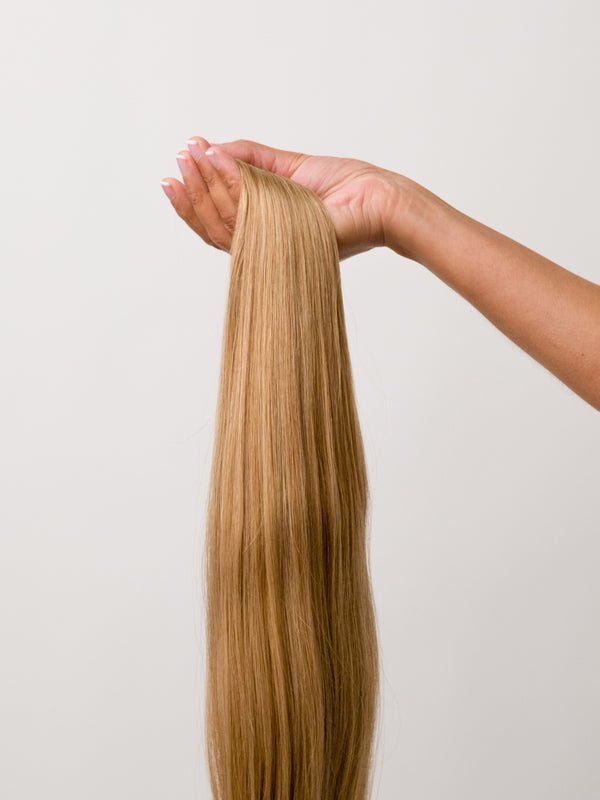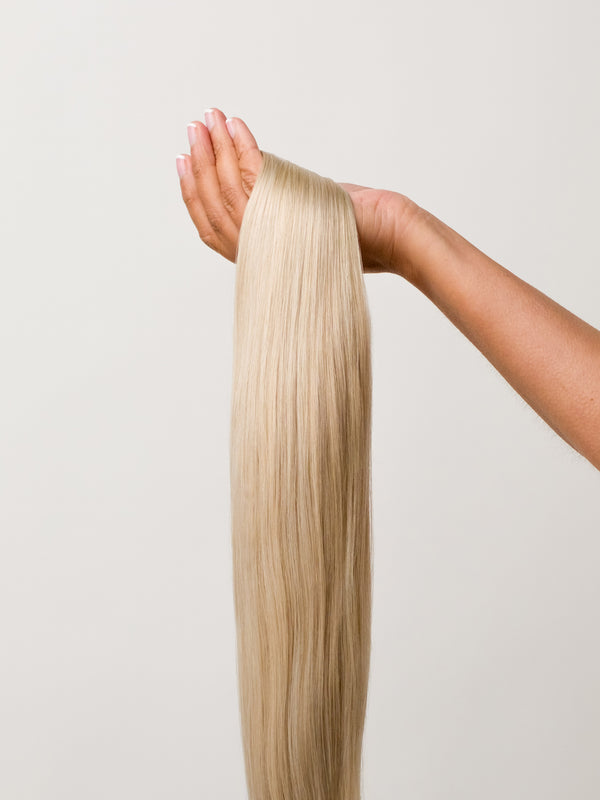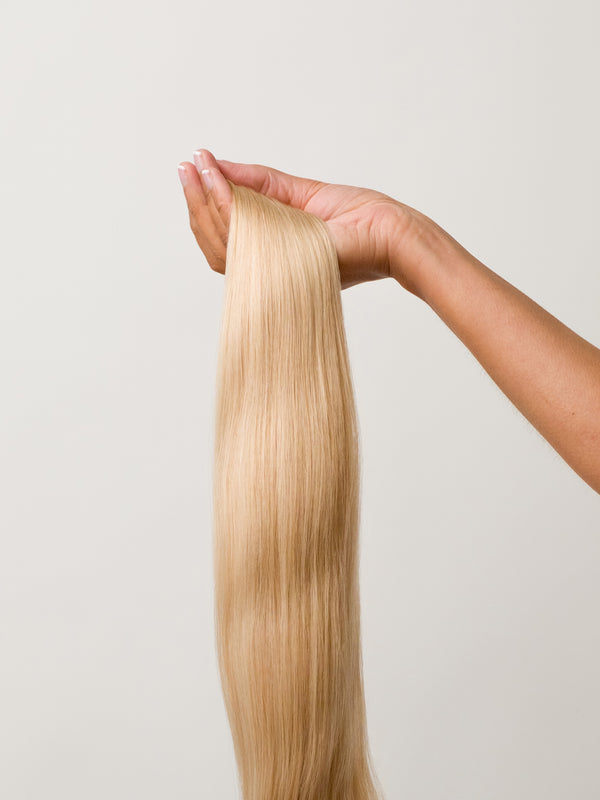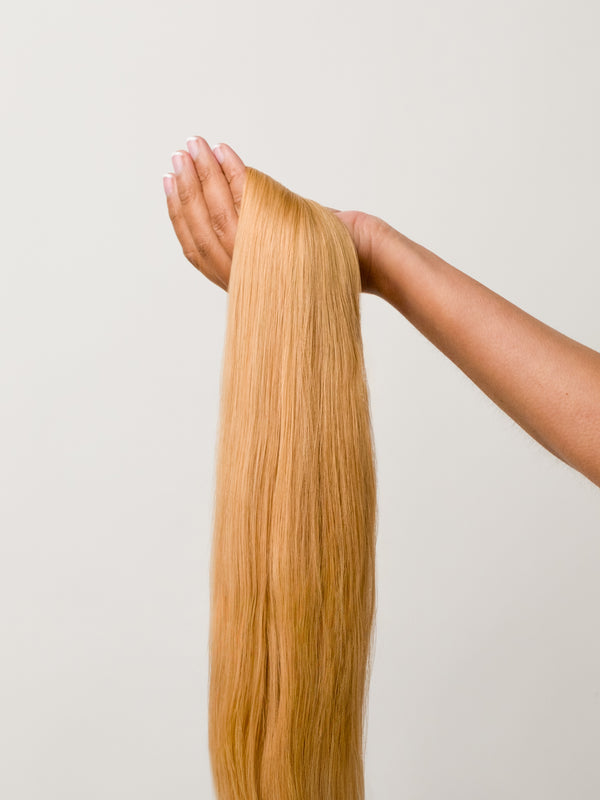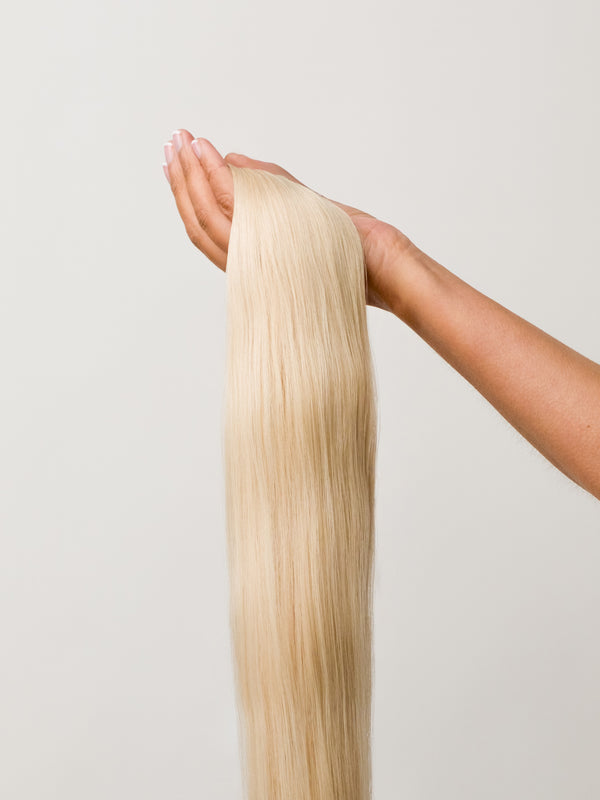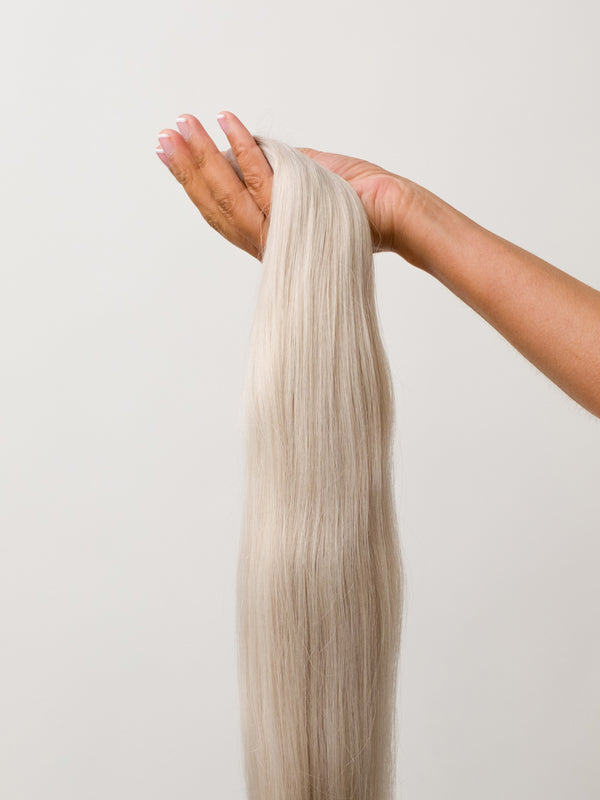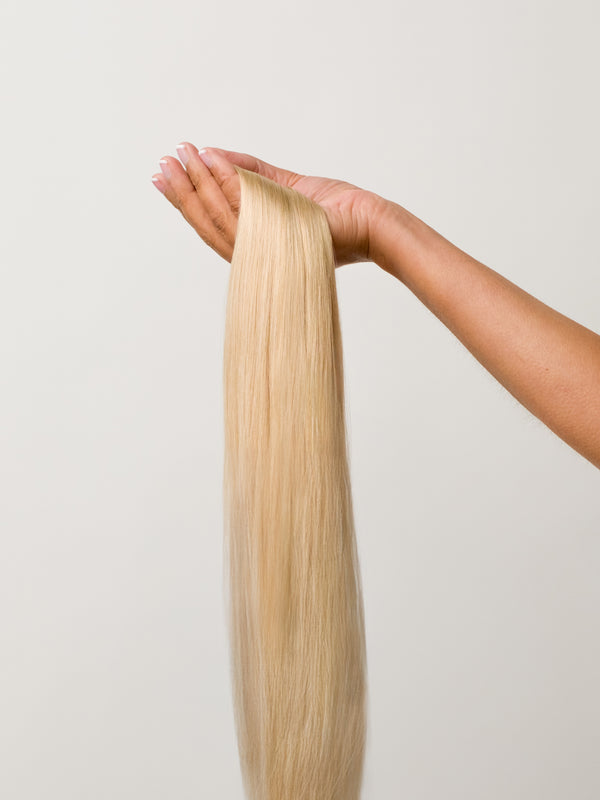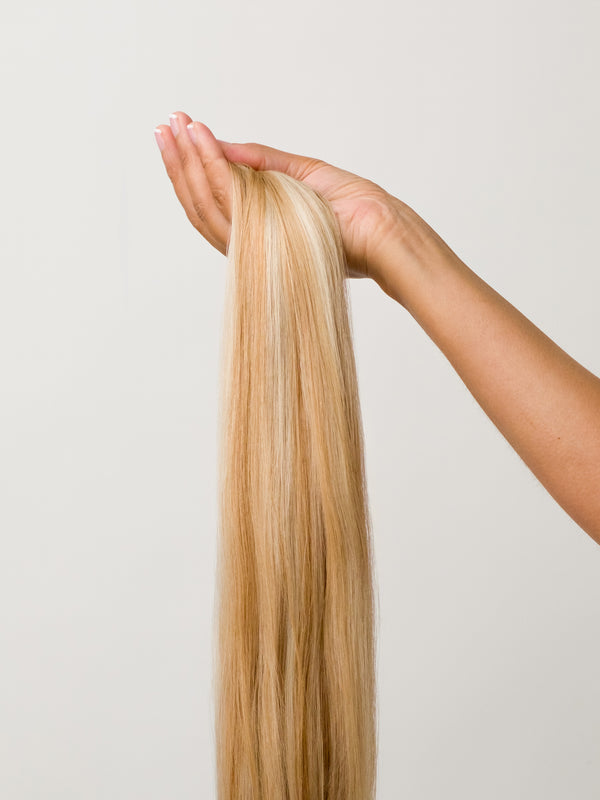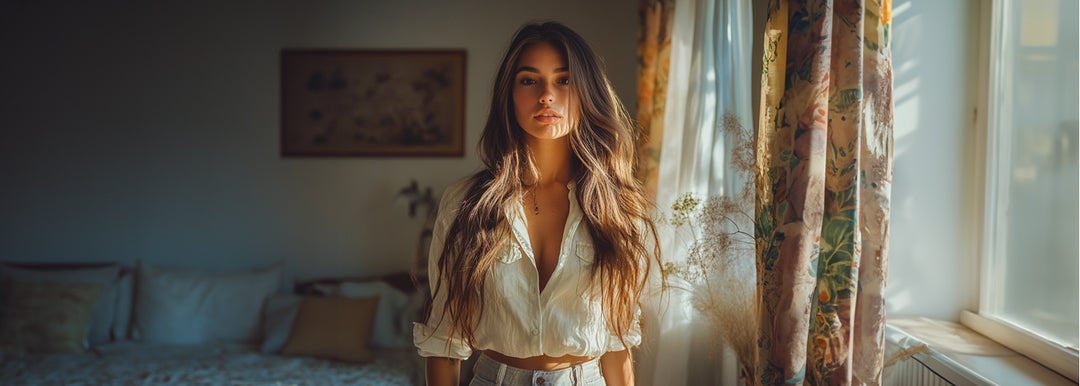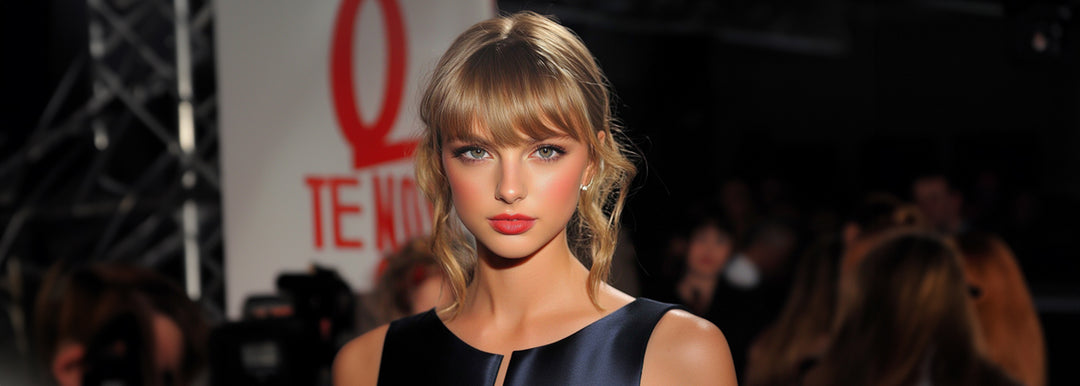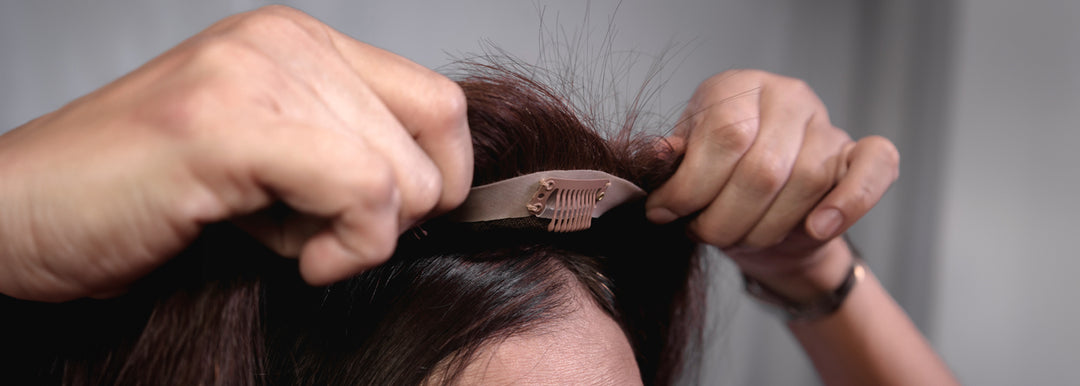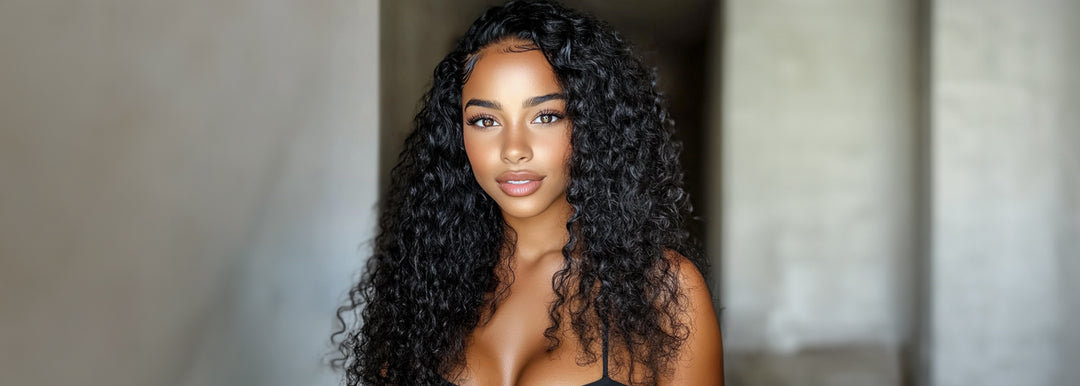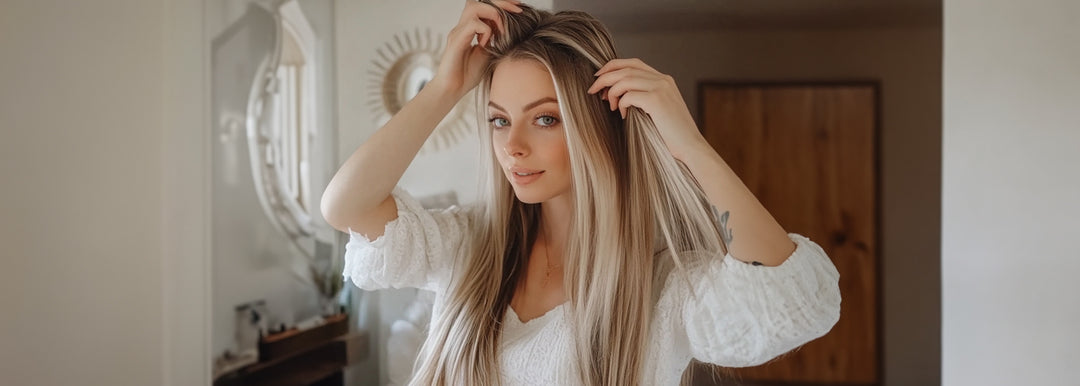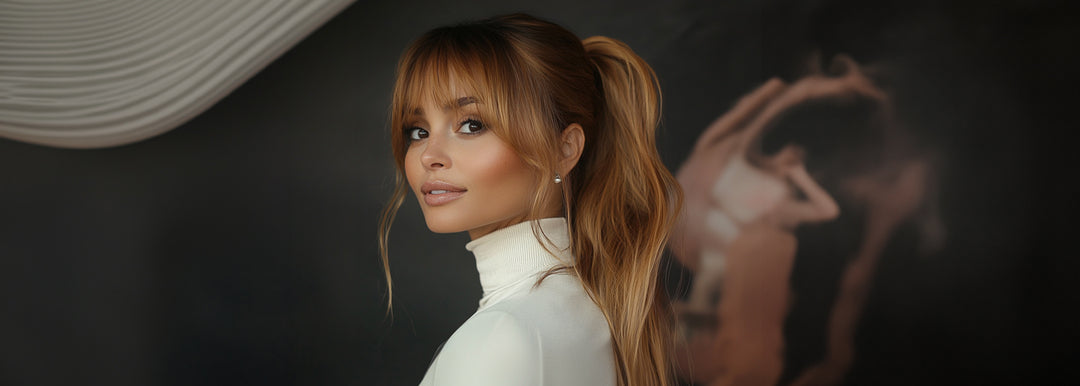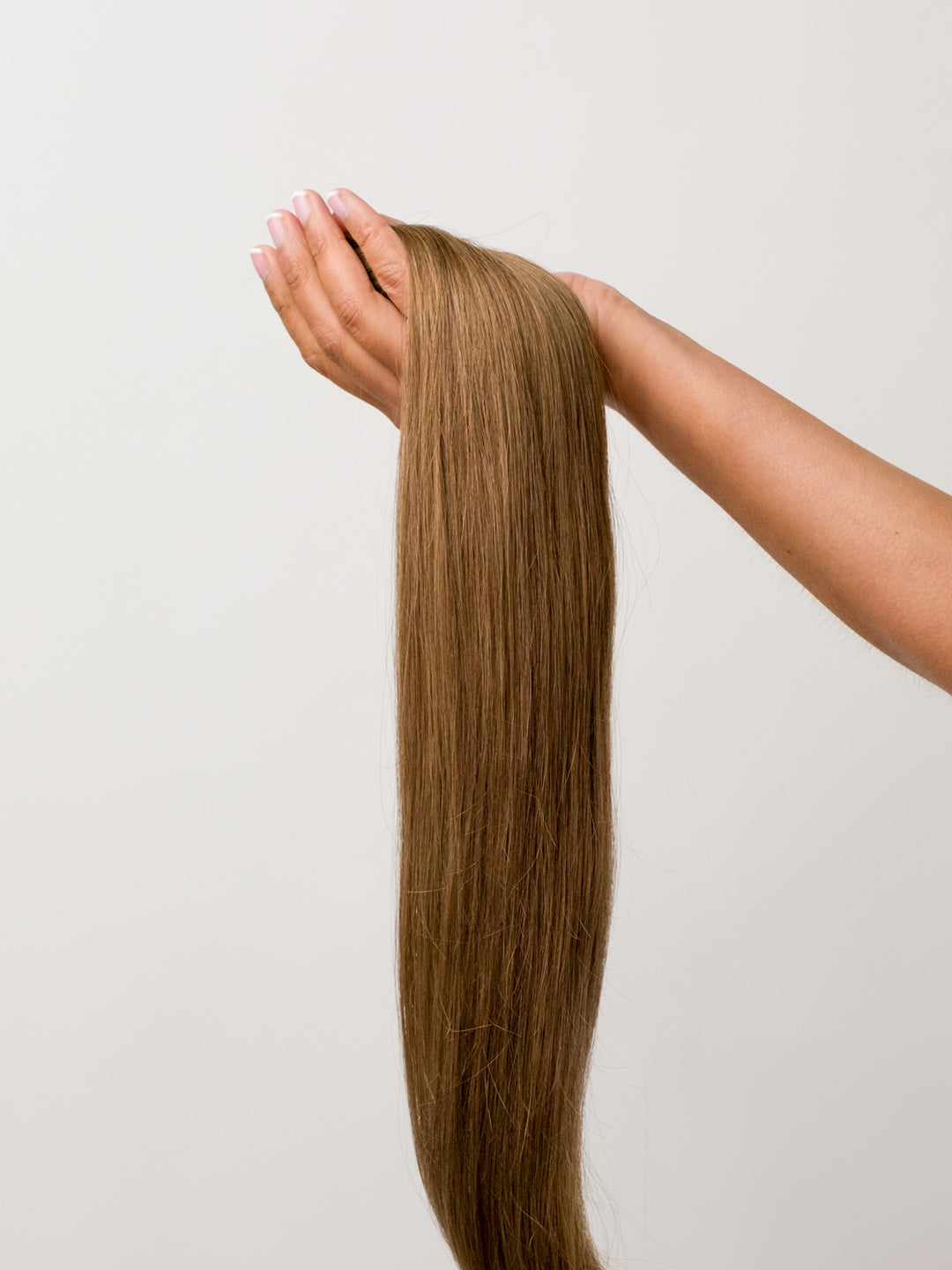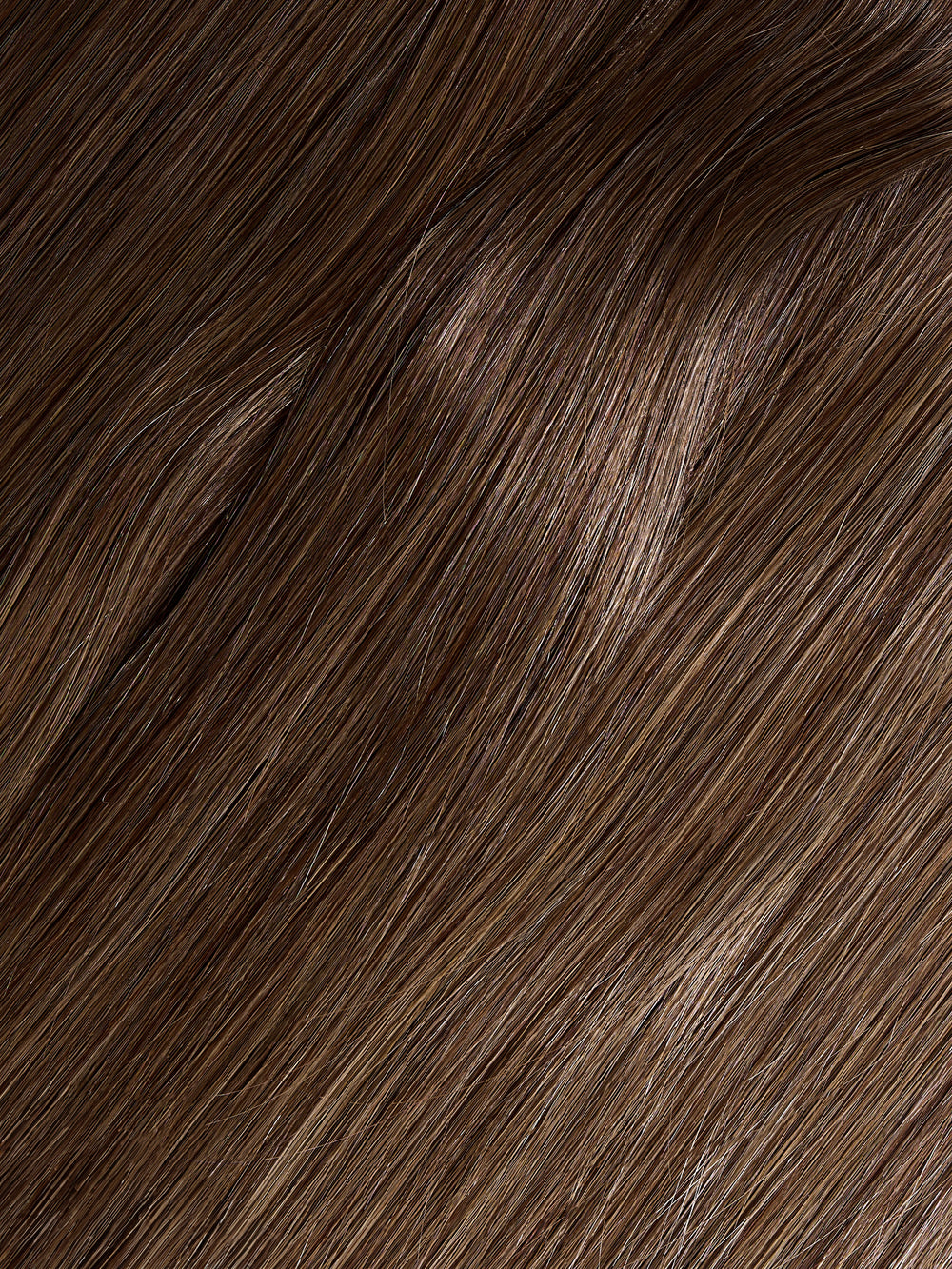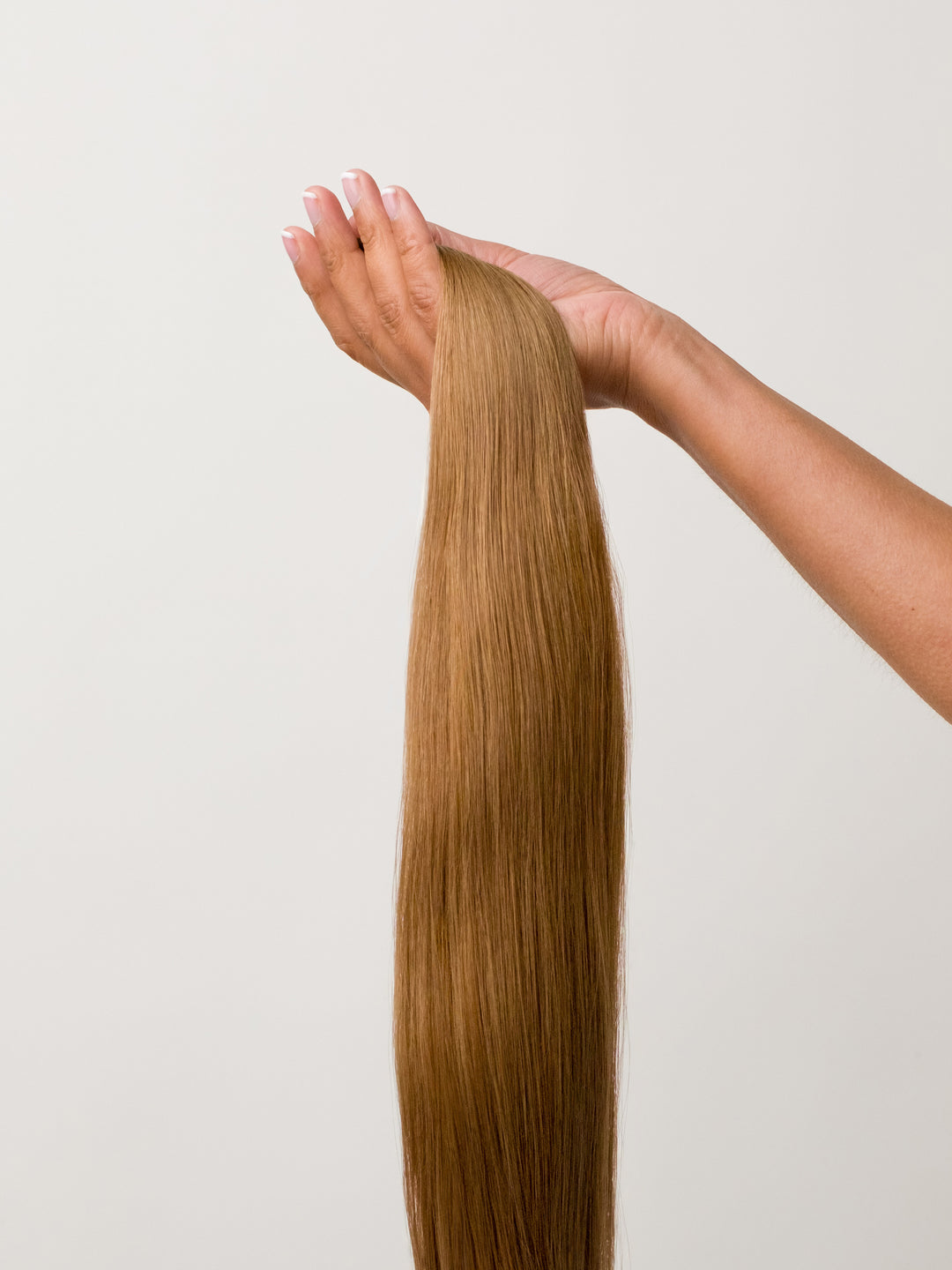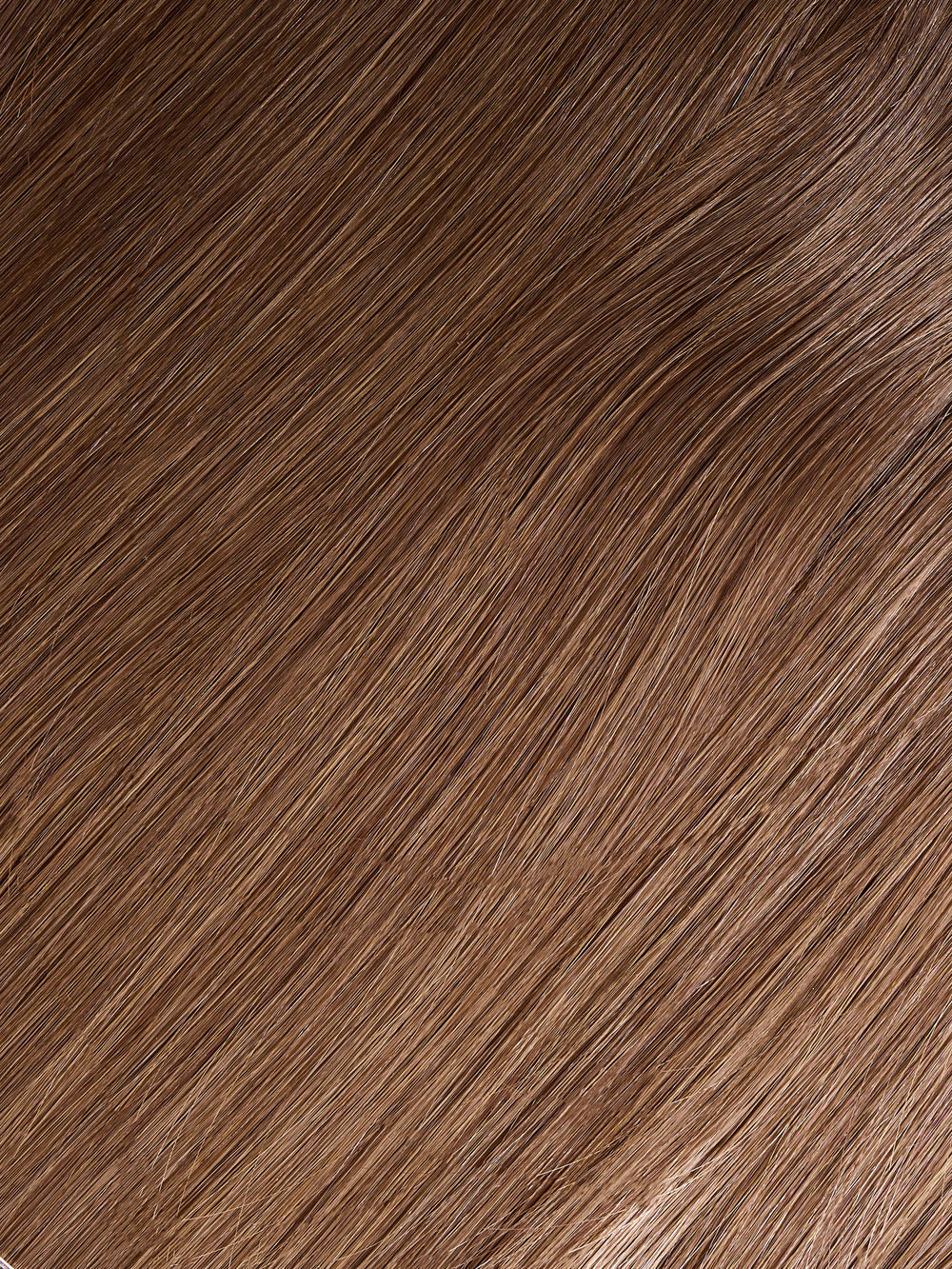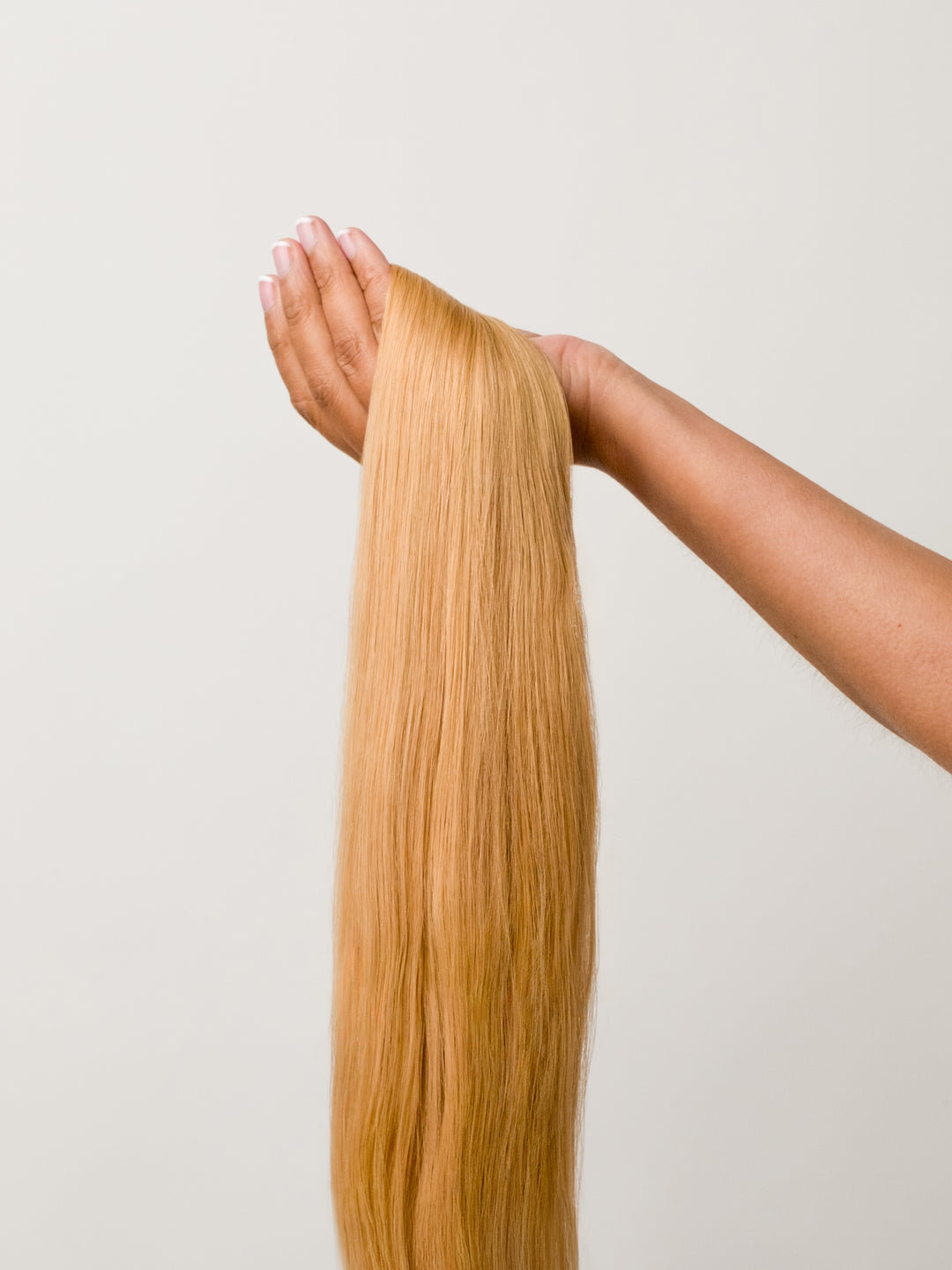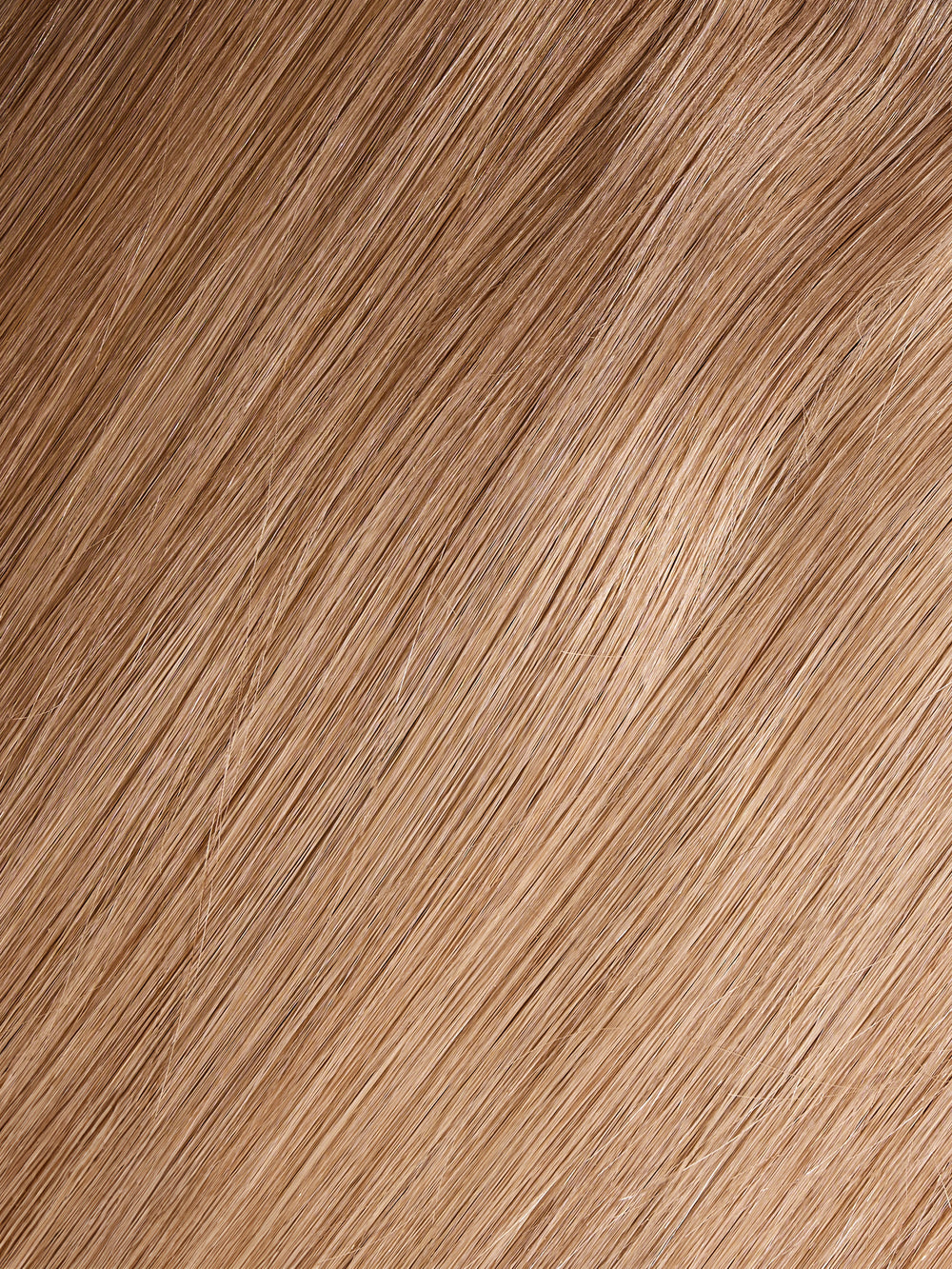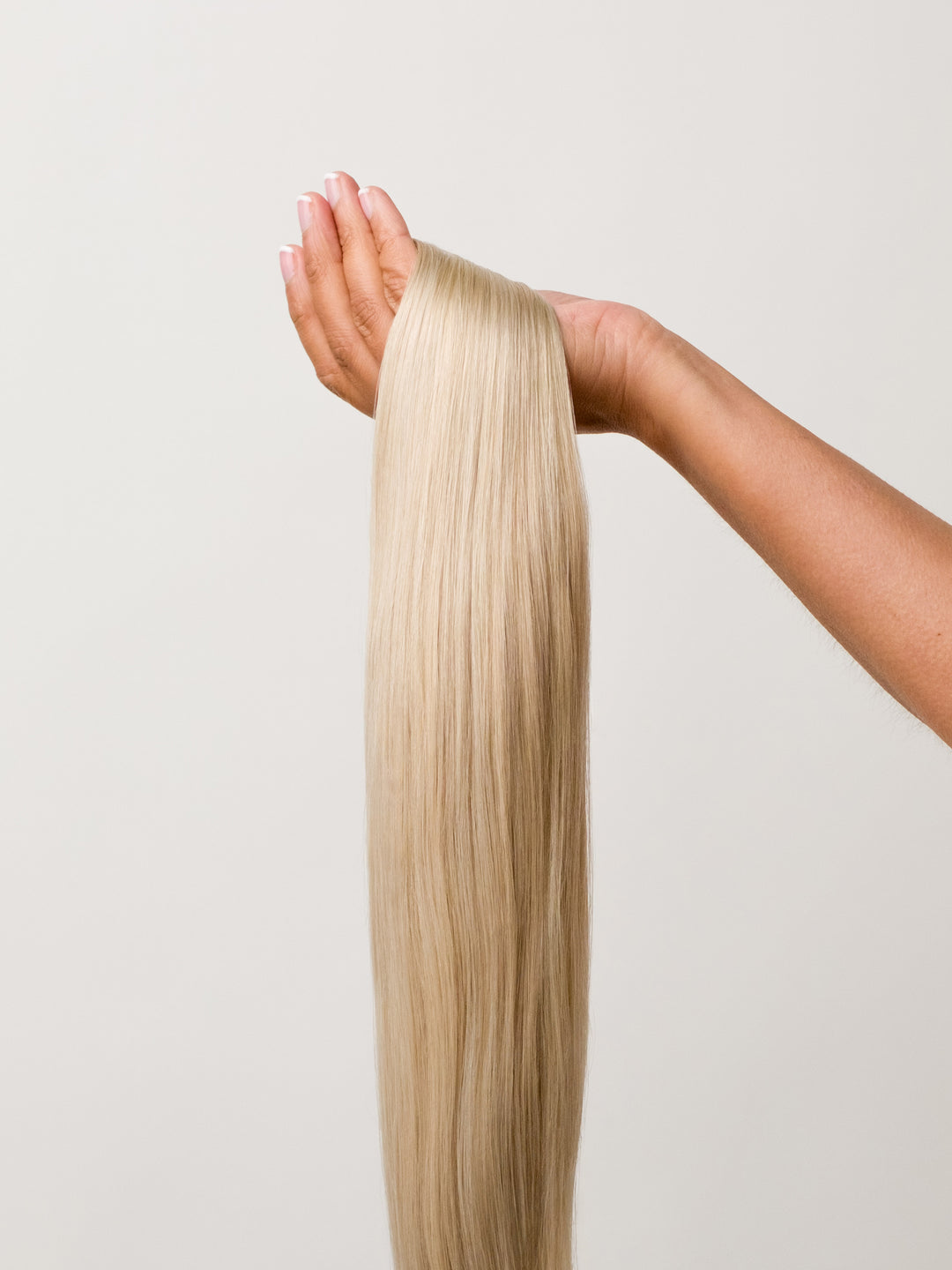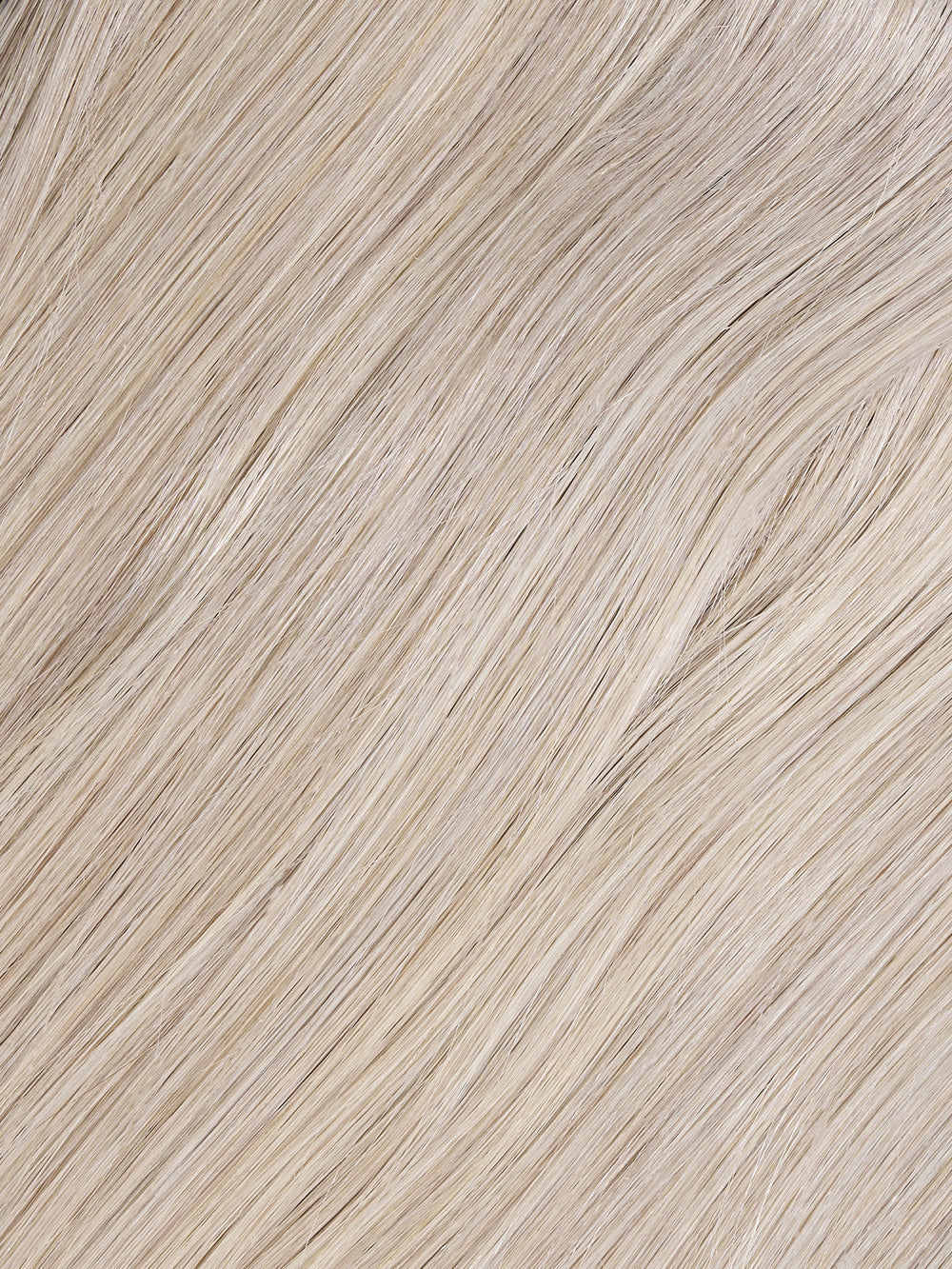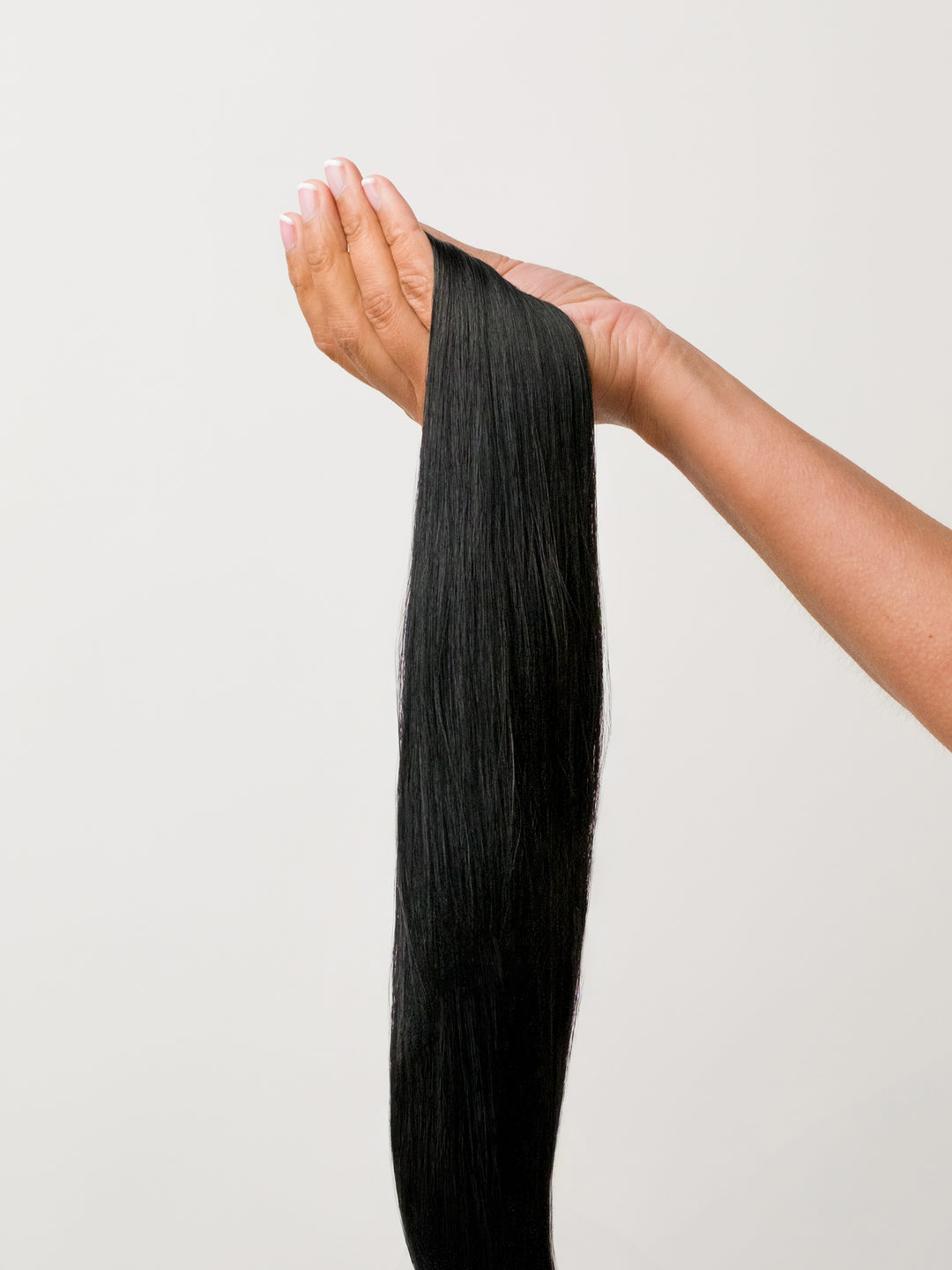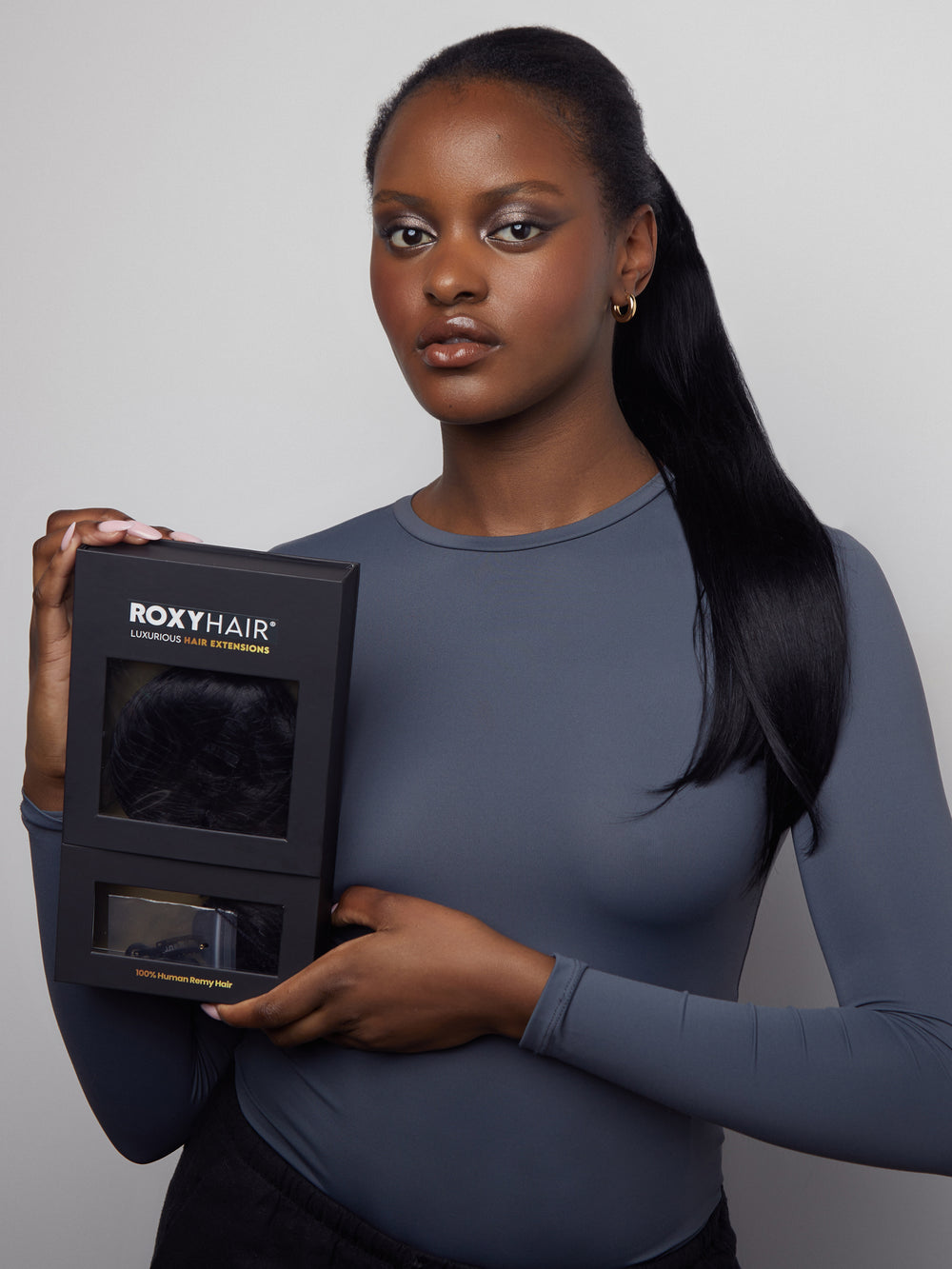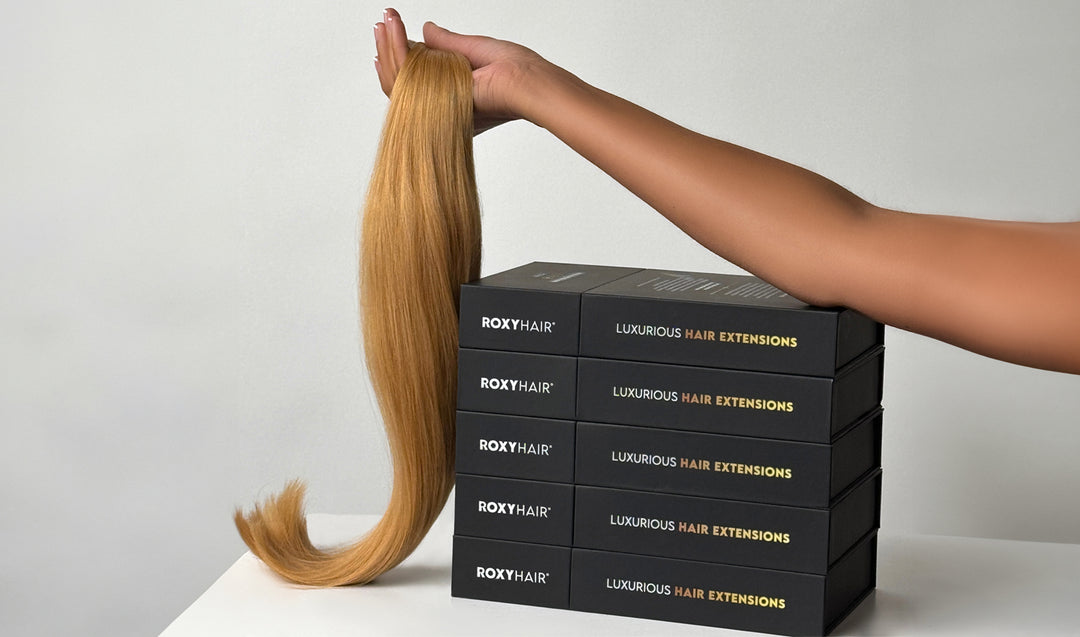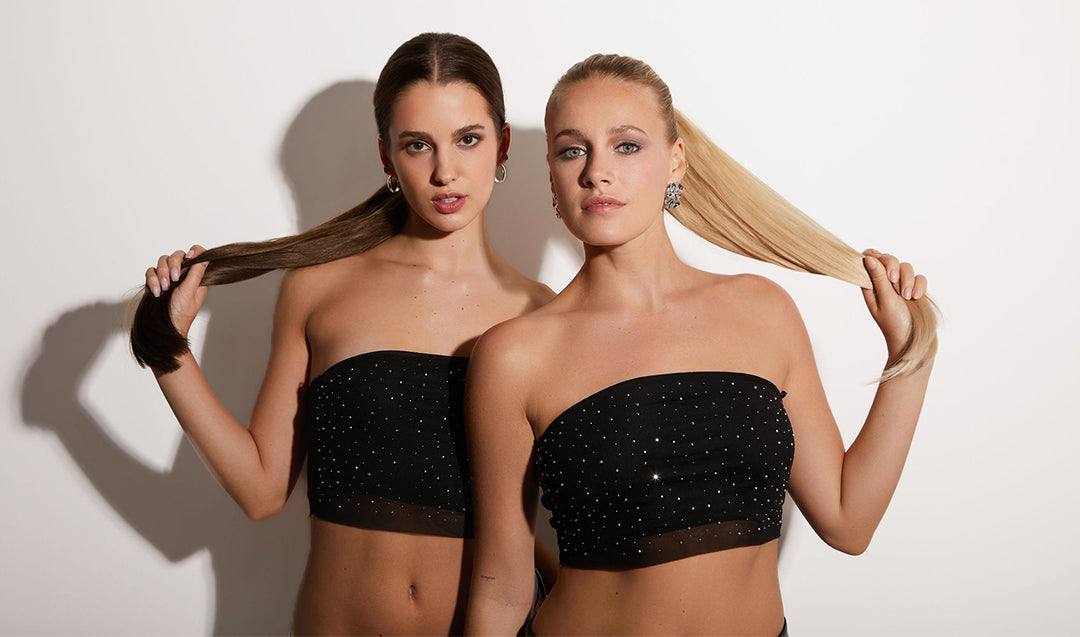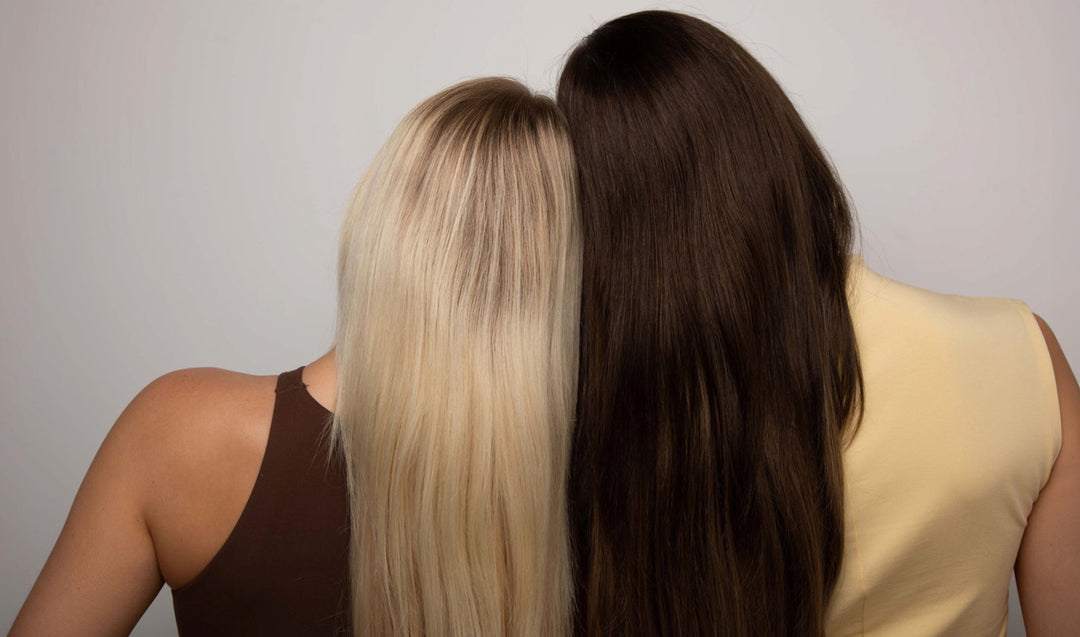You know that feeling when you go for a new hairstyle and the stylist takes off way too much hair? Like you wanted a trim but ended up with a drastic cut that's way shorter than you wanted. It can be pretty rough, especially if you have a big event coming up like a party the next day. You were looking forward to styling your longer locks but now you're stuck with this ultra short 'do that just isn't doing it for you. But don't stress! There's an easy fix - hair extensions.
Extensions are hair pieces that get clipped, glued or sewn into your natural hair to add length, volume and style. They come in different colors and textures made from real human hair or synthetic fibers. You can wear them temporarily or keep them in for a while.
Extensions are perfect for giving yourself a full, bouncy look when your natural hair is cropped short. They can completely transform a blunt, short haircut. Now that you know how extensions can rescue a bad haircut, you're probably wondering how to blend hair extensions in with your very short hair. Let's get into the tips for that.
Key Takeaways
-
Hair extensions with short hair add length and fullness using clip-ins, tape-ins, micro-beads, halos, or volumizing pieces.
-
To blend extensions with short hair, get ones that match your texture, trim them to the right length, tease your roots, and carefully clip or tape them in row by row. Use products to blend.
-
For really short hair, position the extensions where you need more length or volume. Clip-ins may work better if you have an oily scalp. Trim the extensions so they blend with your short hair.
-
Remove clip-ins after use and get semi-permanent extensions (tapes, beads) redone every 6-12 weeks to avoid tangling and scalp issues.
Defining Your Extension Goals
Wearing hair extensions whether it is human or synthetic hair can be an exciting way to switch up your look if you have a blunt haircut. But before you jump in, it's important to think about what you want to achieve, so you can choose the right type of extensions for your needs. Let's look at three key things to consider.
Do you want to add length, volume, or both?
A lot of people choose hair extensions if they want longer, flowy hair. Extensions can make your hair way longer, so you can try out different hairstyles that might not work with your natural hair length. Or, maybe your hair feels thin or limp and you want to add some volume. Extensions can make your hair look fuller and thicker, which is awesome for people with fine or flat hair. Some people want to add both length and volume, and extensions can be made just for that look you're going for.
Do you want temporary or semi-permanent extensions?
If you just need extensions for a night out or a special event, temporary ones are a good choice. Clip-ins and tape-ins are popular temporary options that you can easily put in and take out yourself at home.
But if you want extensions that last a bit longer, you'll want to go with semi-permanent ones. Those usually last around 6 to 12 weeks. You'll need to visit a hair stylist to get them put in though, as they use bonds, weaves, or braids to apply them. And then you'll have to go back to the salon to get them removed when you're ready.
Consider your hair's texture and thickness.
Your extensions should match the texture of your natural hair for a seamless blend. If you have straight hair, get straight extensions. For curly or wavy hair, get extensions with a similar curl pattern to avoid an unnatural look. Also, the thickness of your hair will determine how many extensions you need. If you have fine or thin hair, you might only need a few extensions. But people with thick hair will likely need more extensions.
Extension Options for Short Hair
If you have shorter hair and want to add some length or volume, there are a few good options for hair extensions:
-
Clip-in hair extensions are the easiest human hair extensions to go. You just clip them in wherever you need some extra hair. They come in different lengths, so you can blend them right into your short hair by clipping them in strategically to hide the clips.
-
Tape-in extensions are applied by a professional stylist. They use a thin adhesive tape to attach the extensions close to your scalp. These lie nice and flat, making them virtually invisible while adding length and fullness to short hair.
-
Micro-bead extensions have tiny beads or rings that get clamped onto small sections of your natural hair. They're durable and can be adjusted as your hair grows. Just make sure your stylist places them carefully so the beads don't show.
A couple other options are:
-
Halo extensions which have a wire that sits hidden on your head and blends into your own hair for subtle added length and volume.
-
Toupee or topper extensions that clip in to cover up thinning areas on the crown or top of your head.
-
Volumizer extensions designed specifically to boost thickness and body rather than length, available as clip-ins or sewn-in pieces.
Blending Short Hair for Extensions
Step 1: Choose the Right Extensions
Using high-quality extensions that match your natural hair texture and color is when blending hair extensions. Clip-in hair extension tend to work best for shorter styles.
Step 2: Trim the Extensions
Don't be afraid to trim the extensions with short hair so they're the same length as your actual hair. Having a pro stylist help with this can give you more confidence if needed.
Step 3: Create a Good Base
Prep your natural hair by straightening it or adding some loose waves/volume with a curling iron first. This smooth, volumized base will allow the extensions to blend in seamlessly.
Step 4: Section Your Hair
Divide your hair into neat, horizontal sections from the nape of your neck upwards using clips and a comb. Sectioning makes it easier to clip in the extensions.
Step 5: Tease the Roots
Gently tease or backcomb the roots of each section before clipping in the clip in extensions. The teased texture gives the extensions some grip to attach to.
Step 6: Apply the Extensions
Following the product instructions, clip or tape in the extensions along your roots in each back-combed section, working upwards from the nape.
Step 7: Blend It Together
Once all the extensions are in place, gently brush or comb everything together so the extensions blend with your short hair perfectly.
Step 8: Style As Usual
Use hot tools as you normally would to style, being careful not to tug or pull the extensions. Finish with hairspray.
Step 9: Use Texture Products
Apply a volumizing powder, texture spray or dry shampoo along your part/roots to disguise any visible lines between extensions and natural hair.
Shop Roxy Hair
Hiding Extensions in Super Short Hair
Hair extensions add length and volume to your hair. They need to blend well to look natural. Sometimes extensions can look unnatural or get damaged. It's important to hide them properly. Hiding extensions in long hair is easy. For short hair:
-
Position the extensions correctly to blend with your natural hair.
-
Use clip-ins if you have an oily scalp, as tape-ins may not last.
-
Trim the extensions to the right length for a blended look.
-
Match the texture of extensions to your natural hair.
-
Style with products like curling or straightening for a uniform appearance.
-
Use accessories like headbands or clips to conceal the attachment points.
When to Remove/Replace Extensions
Hair extensions can look nice, but you need to take them out sometimes to keep your hair healthy.
Signs to Remove Extensions:
-
If they're loose or slipping out
-
If they're tangled or matted
-
If your scalp hurts or itches
When to Replace Extensions:
-
Temporary ones - after one use or a few days
-
Clip-in or tape-in - every 4-8 weeks
-
Bonded, woven, braided - every 6-12 weeks
Summary
Extensions can make a short, plain haircut look fuller and more stylish. Choose the right extensions and blend them well with your natural hair color and texture. You can use temporary clip-ins or semi-permanent bonded ones, just apply and maintain them properly.
Blending extensions takes practice but it's doable. Start at the bottom, clip them in row by row, use hair clips to secure them, then style with heat to blend them seamlessly with your natural hair.
With the right application and styling, extensions let you experiment with different looks until your hair grows out again. They can rescue a bad haircut and give you a gorgeous, full hairstyle even with very short hair.
Frequently Asked Questions (FAQs)
Can you really put extensions in super short hair?
Yes, extensions can be applied to very short styles, even pixie cuts or bobs.
Won't the extensions look obvious and fake in my short hair?
Not if applied and blended properly.
How do I keep the extensions from slipping out or getting matted in my short hair?
Use a good extension-safe grip product when applying. Gently brush and detangle extensions daily. Sleep with your hair secured. And avoid over-manipulating or pulling on the extensions.
I have fine, thin hair - can I still get extensions in my short blunt cut?
Yes, there are extensions made specifically for fine hair that won't cause extra stress or damage.
My short hair grows out fast, won't the extensions look strange with my new growth?
Plan to have extensions moved up or removed every 6-8 weeks to stay blended with your new growth.





